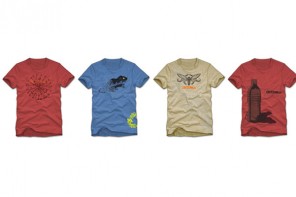Organic vegetable growing tips from Sam Adams of Living Green
Where is sustainability most needed? Some argue it is the urban centres with high pollution and overcrowding. Having just returned from rural Zimbabwe, I have seen a different perspective. Sustainability now seems most immediately needed in rural areas, where food insecurity is rife and agricultural malpractice is a matter of life and death.
Sustainability is critically important in all areas. Poverty and hunger are immediate needs. Urban challenges are perhaps longer term issues.
The farmers that I met last week were in lower Gweru in the centre of the country. It was uncomfortably hot, reaching 37 degrees Celsius. Soon, we trust, the heavens will open and the thirst of the land will be quenched.
The issue of rainfall is crucial in rural subsistence communities. Last year, the rain was insufficient and farm yields were low. Unlike urban areas where imports make up for these deficits, the consequence of low rainfall in lower Gweru is sadly evident in the empty bellies of hungry children.
Maize is the primary crop. For three months the mealies grow and then the rain is over and the fields lie dormant until the rain starts again 7 months later. Only a few farmers maintain a small veggie patch, if they are fortunate enough to have access to water.
My purpose in the trip to Zimbabwe was to teach sustainable agriculture skills. I had the privilege of teaching a group of 200 individuals. I introduced the participants to the concept of companion planting, showing the benefit of planting maize with beans and butternut. I also showed the benefits of marigold and basil interplanted with tomatoes, another crop that is planted by some of the larger farmers.
One of the key elements of sustainable agriculture is the use of mulch. It has been shown to decrease evaporation by 40% and erosion by up to 90%. This is a very basic and easy addition to any farm and yet was a new concept to my listeners in lower Gweru. I was thrilled to share the information, but also saddened by the thought that there must be millions of other small-scale farmers who could benefit from this information.
I hope to return in March and see a very different scene to the one I encountered recently. I hope to see storehouses full of a bumper maize harvest. And I hope to see sustainability in practice through the new ideas of mulching and companion planting.
This is sustainability with immediate gratification. Life and death issues have been dealt with head on, and sustainability increased through improved food security. This is particularly exciting in the light of Zimbabwe, which once had the esteemed title of the ‘bread basket of Africa‘. Let us all continue to plant and to encourage others to plant such that each household, rural or urban, is a sustainable breadbasket in itself.
October planting |
|
| Western and Southern Cape | bean (lima, pole and bush), beetroot, cabbage, carrot, cucumber, eggplant, lettuce, melon, pepper, potato, radish, squash, sweetcorn, and turnip. |
| Inland | bean (lima, pole and bush), beetroot, cabbage, carrot, cucumber, eggplant, lettuce, melon, pepper, potato, radish, squash, sweetcorn, tomato, and turnip. |
| Coastal KZN | bush beans, cabbage, cucumber, eggplant, peppers, and radish. |
Sam Adams runs Living Green, an eco-consultancy and organic food garden company in Cape Town. He can be contacted on 074-1715566 or info@startlivinggreen.co.za; www.startlivinggreen.co.za





